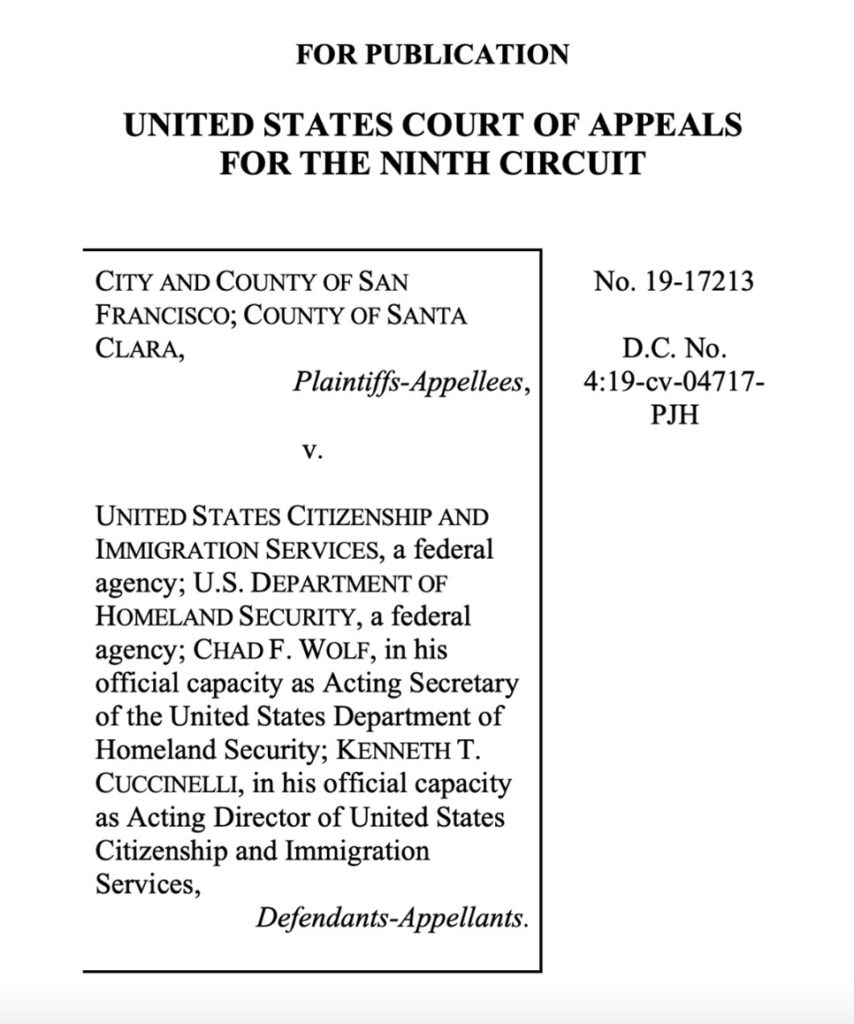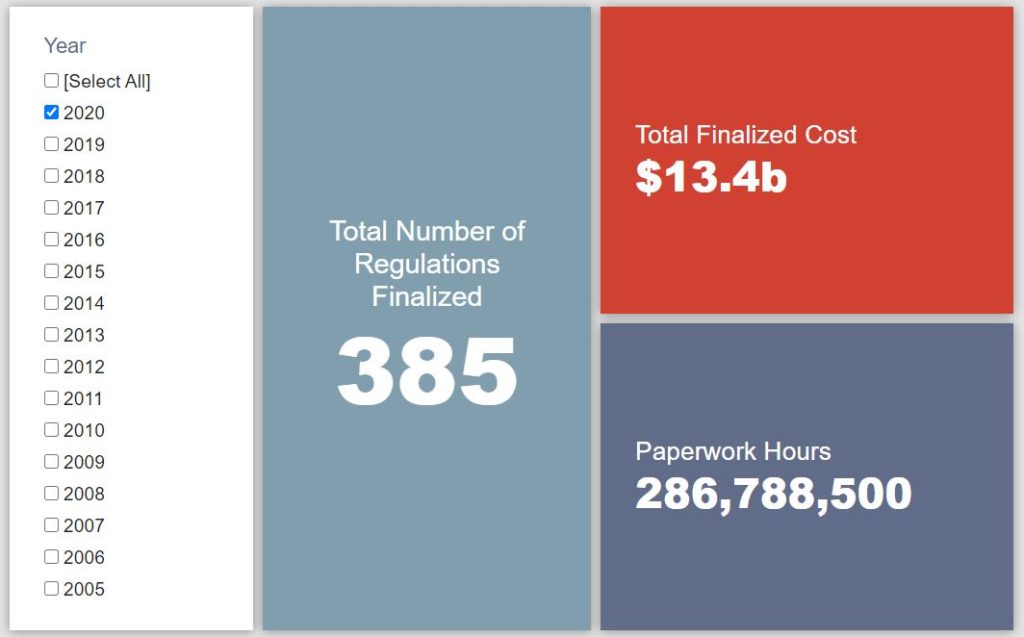Week in Regulation
December 7, 2020
A Notable Break in the Net-Cost Streak
In a relatively spry week, there were 15 rulemakings with some quantified economic impact. More notably, for the first time since the end of October, agencies came out on the cost savings side of the ledger. Measures from the Department of Justice (DOJ) and Environmental Protection Agency (EPA) lead the way. Across all rulemakings, agencies published $1.9 billion in total net cost savings but added 997,446 hours of annual paperwork.
REGULATORY TOPLINES
- Proposed Rules: 37
- Final Rules: 65
- 2020 Total Pages: 78,601
- 2020 Final Rule Costs: $13.4 billion
- 2020 Proposed Rule Costs: $20 billion
TRACKING THE REGULATORY BUDGET
The most significant deregulatory rulemaking of the week was DOJ’s proposed rule regarding “Partial Filling of Prescriptions for Schedule II Controlled Substances.” The proposal would implement a portion of the Comprehensive Addiction and Recovery Act of 2016 in order “to allow for the partial filling of prescriptions for schedule II controlled substances under certain conditions.” The main purpose of this policy is to reduce the amount of unused opioids available to the public, and thus help reduce illicit use and addiction. This also leads to cumulative cost savings for the public since only paying for a partial fill that meets their medical needs, instead of a wasteful “full” one, necessarily costs patients less. DOJ estimates that this could result in annual savings of $636 million or roughly $2.6 billion in present value over a five-year window. Since this is only a proposed rule, however, it does not technically apply to the fiscal year (FY) 2021 regulatory budget.
The most significant final rule that contibutes savings to the FY 2021 budget comes from EPA’s rule entitled “Fuels Regulatory Streamlining.” The rule “updates many of EPA’s existing gasoline, diesel, and other fuel quality programs to improve overall compliance assurance and maintain environmental performance, while reducing compliance costs for industry and EPA.” The agency expects these actions to provide savings primarily due to greater “fuel fungibility” for consumers and decreased administrative burdens for fuel producers. For regulatory budget purposes, EPA estimates $479 million in present value savings.
While the administration’s FY 2021 regulatory budget caps are still forthcoming, so far into FY 2021 agencies have officially published 44 deregulatory actions and 13 regulatory actions (as defined by Executive Order (EO) 13,771), totaling $35.2 billion in quantified total net costs. It is worth noting at this point, however, that regardless of whether or not the current administration releases said caps, the Biden Administration assumes power in January 2021. It is highly unlikely that EO 13,771 will remain operative (at least in anything resembling its current form) beyond then, and thus the FY 2021 regulatory budget “window” will be a truncated one. Nevertheless, the American Action Forum (AAF) will continue to track EO 13,771 activity through the end of the administration to provide a record of the regulatory budget initiative’s historical legacy and implications. AAF’s review of the administration’s FY 2020 regulatory budget progress can be found here.
THIS WEEK’S REGULATORY PICTURE
This week, federal courts rule against three of the Trump Administration’s immigration rules.

Source: https://www.govinfo.gov/content/pkg/USCOURTS-ca9-19-17213/pdf/USCOURTS-ca9-19-17213-0.pdf
Two federal courts handed down rulings against the Trump Administration in a pair of cases involving rules aimed at tightening immigration.
In the first ruling, issued on December 1, the U.S. District Court for the Northern District of California blocked two related interim final rules (IFRs) dealing with visas for high-skilled workers, specifically the H-1B, H-1B1, and E-3 programs. The first rule, published by the Department of Homeland Security (DHS) in October, limited the types of occupations that are covered by the H-1B program. The second rule, published simultaneously by the Department of Labor, raised the minimum wages that employers must pay workers in those visa programs. Research from AAF’s Isabel Soto and Tom Lee highlights the negative economic effects of the latter rule.
The judge in the case ruled that both agencies inappropriately sidestepped the notice-and-comment provisions of the Administrative Procedure Act by claiming that COVID-19 had caused an economic emergency endangering American workers. He denied these arguments primarily because the “emergency” that needed immediate regulatory action had existed for five months prior to the rules being published, which cast doubt on the urgent need for the actions.
In the second ruling, issued on December 2, the U.S. Court of Appeals for the Ninth Circuit upheld a previous injunction placed on the DHS’s Public Charge rule, though it reduced a nationwide injunction from a federal court in Washington to cover only the states and territories in the Ninth Circuit.
The three-judge panel split 2-1 against the Trump Administration. The judges in the majority decided that the rule was likely not a reasonable interpretation of the authorizing statute and that DHS acted in an arbitrary and capricious manner because it failed to consider the rule’s financial effects or the impact on public health and safety, and also did not sufficiently explain why it was reversing a policy that had been in place for 20 years. The dissenting judge noted that the U.S. Supreme Court has lately taken a dim view of injunctions on rules in similar cases and would likely strike down the injunction.
TOTAL BURDENS
Since January 1, the federal government has published $33.5 billion in total net costs (with $13.4 billion from finalized rules) and 345.5 million hours of net annual paperwork burden increases (with 286.8 million hours due to final rules). Click here for the latest Reg Rodeo findings.












